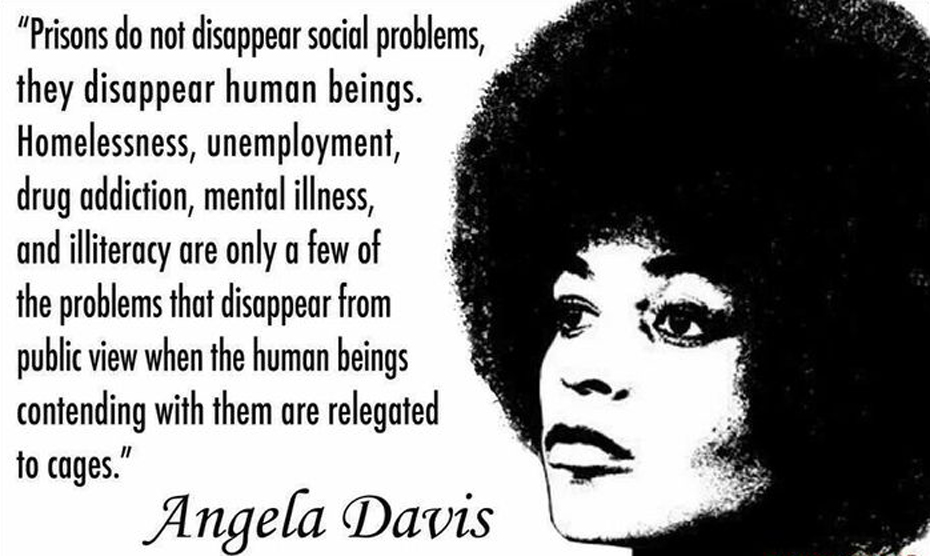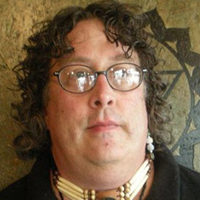
Prison abolitionists’ work will be complete when prisoners walk out of open cell doors. Abolitionists strive tirelessly for a more merciful remedy to crime. Even the socialist candidate Sen. Bernie Sanders built part of his platform on prison reform. His message resonated with millions. This dialogue has led a resurgence of prison abolition grassroots organization.
Prison abolitionists have always pointed out it’s the poor who are imprisoned. “Prisons do not disappear social problems,” says world-renowned activist Angela Davis, “they disappear human beings. Homelessness, unemployment, drug addiction, mental illness, and illiteracy are only a few of the problems that disappear from public view when the human beings contending with them are relegated to cages.”
“What we mean is that we want to end the whole system of mutually reinforcing relationships between surveillance, policing, the courts, and imprisonment that fuel, maintain, and expand social and economic inequity and institutional racism, “ Isaac Ontiveros told Vice media. “So, not just prisons.” Ontiveros works for Critical Resistance. Ontiveros goes on to indicate America has always used laws, statutes and policing policies to enforce racial inequities.
Under the Trump administration, Attorney General Jeff Sessions is going backward to a more draconian time of prison incarceration. According to this Q&A interview from Human Rights Watch, Sessions has directed the Justice Department to impose the harshest possible sentences.
San Francisco Bay View is a national newspaper founded in 1976 for the Black community worldwide. Thousands of prisoners have subscriptions. Some of the paper focuses on prisoners and their abuse. Mary Ratcliff and her husband Willie bought the paper 27 years ago. Mary spoke exclusively to People’s World.
“It was not intentional, but glad we did it,” Ratcliff reflected. “It was in 1992 that right away we dropped off copies at the local county jail. It was during the height of mass incarceration.” The paper was being read by the families “in the hood” who had relatives in prison.
“The prisoners took the papers with them to prison,” Ratcliff stated. San Quentin was the first prison where their paper flourished. “One of our first contributors was a death row inmate. He wrote a political commentary for our paper.”
At the same time, Ratcliff and her husband had moved from Alaska to San Francisco for her to attend law school. “When I graduated I found my activism did not align with corporate law firms,” she said. They settled in a Black poor community. Community organizing was part of her history and played well there.
“We were able to organize and successfully shut down a power plant polluting our community. The city commission was not happy with us, but we succeeded. The community came together to get their voices heard.”
Ratcliff shared a poignant memory: “One night I sat up all night with a mother living on the same block and her child. They had a non-stop nosebleed due to the pollution.”
It was around then that another community organizer rented out the next door storefront. “Alicia Garza was next to us, and she later helped create Black Lives Matter.”
Many other prisoners began to write, too. In time their stories became the “Behind Enemy Lines” section in the paper. “The prisoners began to share observations revealing the abuses behind prison walls,” Ratcliff said.
San Francisco Bay View prints 20,000 copies of its 24-page newspaper, of which 3,000 are mailed to prisoners across the nation. “The cost is $7,000 a month. We are hurting for advertisers and rely on donations, as my husband and I live off our Social Security,” Ratcliff tearfully stated. She is 78, and Willie, her publisher husband, is 86.
“We got letters from prisoners saying they were contemplating suicide,” she continued. “They came across the paper and are now organizing. That is rewarding, and acts as adrenalin in continuing this paper.”
The paper prints an inmate pen pal list. Prisoners are then able to connect with other prisoners in other states. And outside folks begin to correspond. In time they are organizing, too. The paper is a bedrock of prisoner organizing in America.
Ratcliff states, “A gang inspector in Pelican Bay hates the paper. He is frustrated that other prisoners and outside folks can connect for organizing purposes.” Chuckling, she said, “As if our paper is a security threat.” This reflects how important this paper is for actively participating in prison abolition work.
The amazing example of the work San Francisco Bay View does is the 2013 Pelican Bay hunger strike. NPR has an interview with some of the coordinators. Benjamin Wallace-Wells in that interview states, “I think it took a long time. These four men who led the hunger strike—Todd Ashker, [allegedly] of the Aryan Brotherhood, had the initial idea; Sitawa Jamaa, who is allegedly from the Black Guerrilla Family; and Arturo Castellanos, allegedly a senior leader of the Mexican Mafia; and Antonio Guillen, allegedly one of the three ‘generals’ of Nuestra Familia—they were put together in basically the same space years ago, in 2006, and it took five years for them come together.”
Mary Ratcliff says, “It was in 2013, due to a windfall, we were able to go from a 16-page paper to 24 pages.” San Francisco Bay View was able to contribute more space for the strike. Which helped inside prisoner organizing. “We were pleased to find outside readers appreciated the coverage. Many readers finally admitted they had family inside prisons. Through our paper, they were able to reconnect with loved ones.” The timing coincided with the public caring more and participating with prison abolition work.
Another informative prison abolition source is It’s Going Down. While that site does not actively lead protests, it is the go-to organization for online news. They alert the activists about the hottest news and information.
The Industrial Workers of the World started a committee, Incarcerated Workers Organizing Committee (IWOC), which works to educate, mentor, and support prison workers.
A very tight-knit networking group is Anarchist Black Cross, which supports those imprisoned and struggling for freedom and liberty.
Michael Moore’s film Where to Invade Next includes a segment on humane prisons in Norway, asking Americans to reconsider if we really have all the best answers to crime, recidivism, and restorative justice.
Many of the prison abolitionists are working on basic reforms, such as:
Substituting, for incarceration, supervised release, probation, restitution to victims, and/or community work.
Decreasing terms of imprisonment by abolishing mandatory minimum sentencing.
Decreasing ethnic disparity in prison populations.
Improving prison conditions.
Crime prevention rather than punishment.
Abolition of specific programs which increase prison population, such as the prohibition of drugs (e.g., the American War on Drugs), and prohibition of sex work. Alcohol restrictions and gun control are other areas that need re-examination.
Education programs to inform people who have never been in prison about the problems.
Fighting individual cases of wrongful conviction.
Interest in community restorative justice is growing in communities around America. The National Institute for Justice assists communities in this training.
Prison overcrowding, as well as budgetary issues in many states, might bring prison abolitionists’ goals closer to fruition. The rise in grassroots activist protests over these issues shows that the public is open to a new way for justice. In addition, cruel and unusual punishment in many states is being exposed more and more. This drives the growing activism within the prison abolitionist groups.
You may be asking if you should become involved in prison abolition work. Angela Davis said it best:
“If they come for me in the morning they will come for you at night.”










